Diastasis recti Rib Flare
How Rib Flare Impacts Diastasis recti, Pelvic floor and Postpartum tummy.
If you’ve noticed your ribs flare forward or that your rib cage seems to stick out more since having kids, you’re far from alone. Many postpartum women struggle with rib flare — especially those also dealing with Diastasis recti or Pelvic floor dysfunction. It can make your tummy appear more prominent, affect your posture, and even lead to back pain or discomfort when you breathe deeply, even if you are doing Diastasis recti exercises.
The good news? Once you understand why your ribs are flared and how it’s connected to your core and pelvic floor, you can begin to fix rib flare safely and effectively.
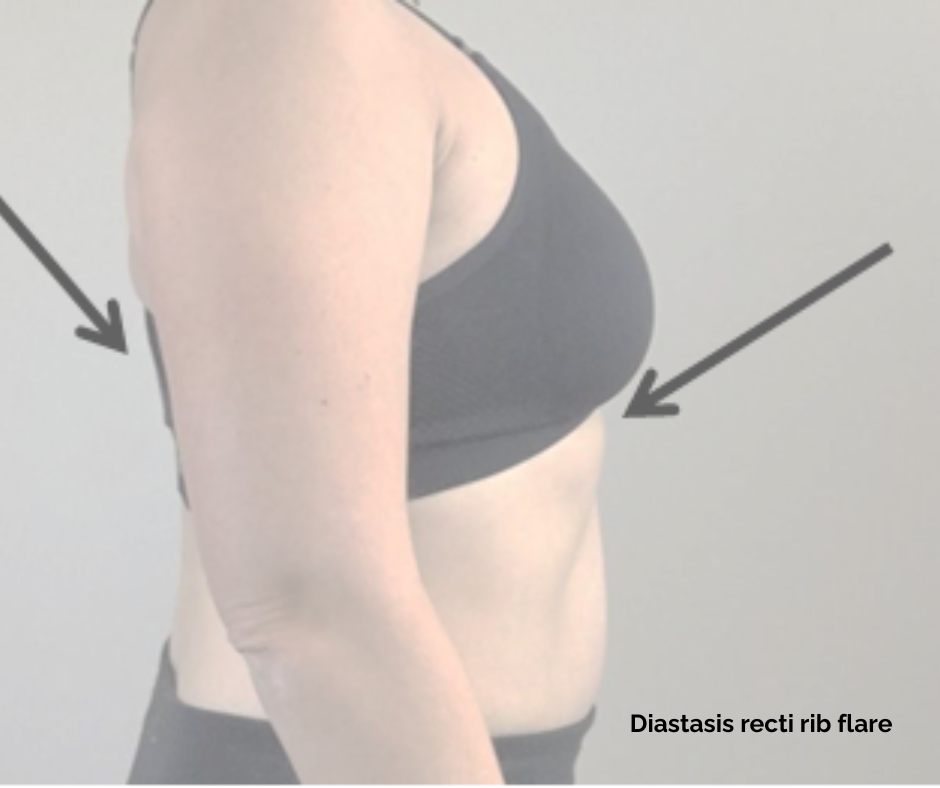
Understanding Rib Flare
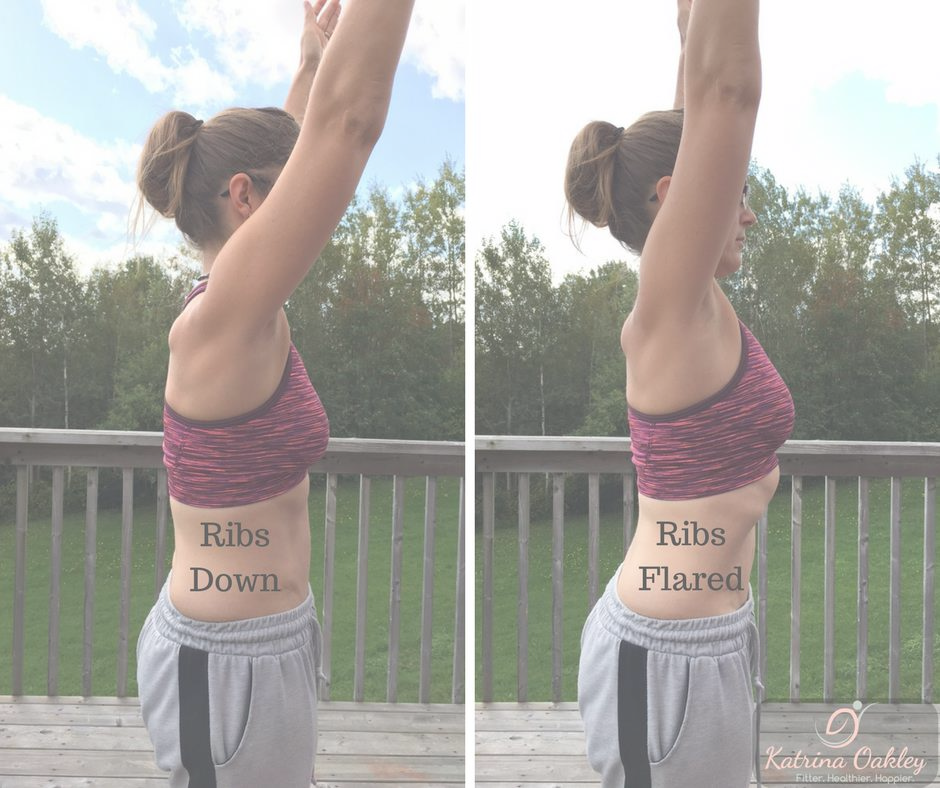
What Is Rib Flare?
Rib flare occurs when the bottom of the ribs stick out, instead of resting naturally in line with your pelvis. The rib cage flares forward and lifts away from the abdominal wall, creating a visible angle that can make your stomach look “pushed out.”
You might see a left rib flare, one-sided rib flare, or ribs that feel uneven. When your rib cage is in its ideal resting position, the rib cage would be stacked over your pelvis, allowing your diaphragm, core muscles, and pelvic floor to work together in harmony.
When the ribs flare, everything gets a little off-balance — alignment, strength, and even your breathing pattern.
Causes of Rib Flare
Several factors can cause or worsen rib flare:
- Pregnancy and postpartum recovery: As your growing baby expands your abdomen, your rib cage expands to make room. This shifts your diaphragm upward and places your body in a constant state of inhalation.
- Weak or lengthened core muscles: After pregnancy, your abdominal muscles may not provide enough tension to hold the ribs in a neutral position.
- Tight back extensors and hip flexors: These muscles pull the ribs forward, exaggerating the flare.
- Postural habits: Standing or sitting with your chest lifted and ribs open can reinforce flared ribs.
- Breathing mechanics: Shallow, upper-chest breathing keeps the ribs “stuck” open, while proper diaphragmatic breathing allows them to move fluidly.
Over time, this misalignment can create a visible flare that affects not only how your body looks — but how it functions.
When your rib cage flares, your spine and pelvis lose their natural balance. You may experience back pain, lower back tension, or a feeling of weakness in the core muscles. Because the diaphragm and pelvic floor are so closely linked, the effects often extend downward too.
A constantly lifted rib cage can prevent the Pelvic floor muscles from responding correctly during breathing and movement. Over time, this can lead to pelvic floor dysfunction, Pelvic floor tightness, or even prolapse symptoms. Some women also notice pressure, heaviness, or leaking when sneezing or exercising — all signs that the pelvic floor can’t function properly.
When your ribs flare, your tummy can also appear more rounded or bloated. That’s not extra fat — it’s often a result of your abdominal muscles being stretched and unable to generate proper tension.
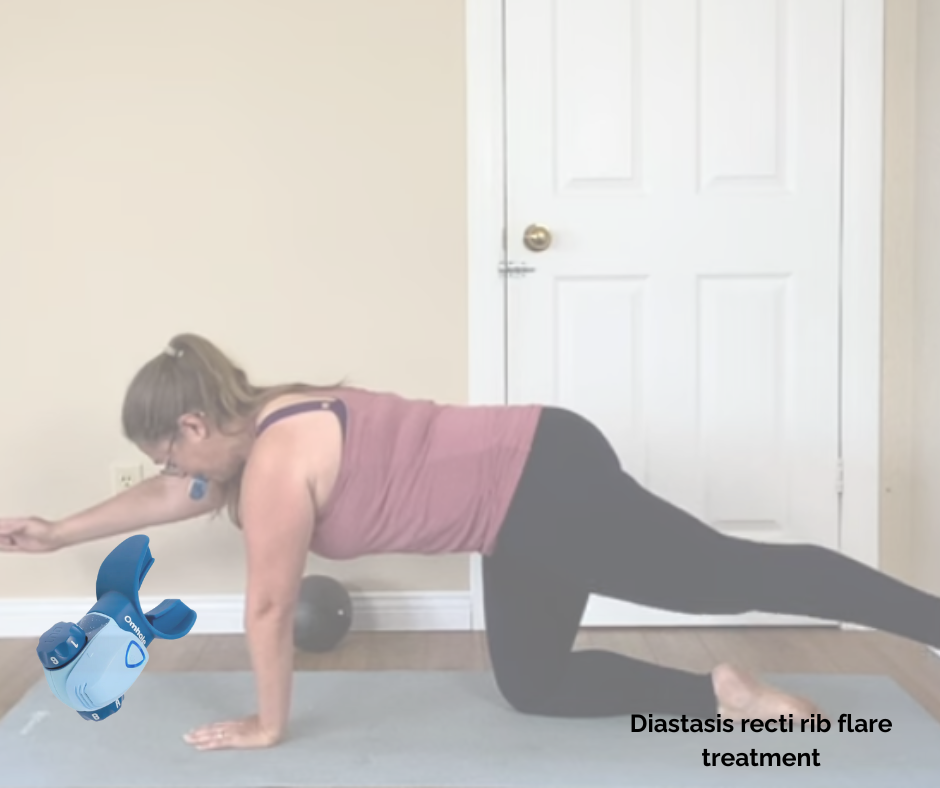
Diastasis recti is the separation of the abdominal muscles along the midline, creating a gap or bulge down the center of the stomach. This happens as the connective tissue that runs from the ribs to the pelvis stretches to accommodate a growing belly.
Connection Between Rib Flare and Diastasis recti
When your ribs flare, your core muscles stay in a lengthened position. The diaphragm and pelvic floor can’t coordinate properly, and that tension imbalance prevents healing.
Essentially, the rib flare is associated with Diastasis recti because both involve the same deep-core system losing alignment and pressure control. You can’t truly heal Diastasis recti without addressing rib flare — they work hand in hand.
If your rib flare is the result of pregnancy or poor breathing mechanics, working on breathing and alignment can dramatically improve both your core strength and Pelvic floor symptoms.
Postpartum Rib Flare and Recovery
During pregnancy, your rib cage widens and your diaphragm rises to make space for your baby. After birth, the body begins its postpartum recovery, but sometimes the ribs flare forward and stay there. This creates what’s known as postpartum rib flare.
In this position, your breathing pattern changes — you might breathe more into your upper chest, and less into your sides and back. This keeps your core and pelvic floor disconnected.
If you notice your ribs are flared when lying down or standing, or you can’t seem to “pull your tummy in” no matter how hard you try, this could be a sign that your rib positioning is still off.
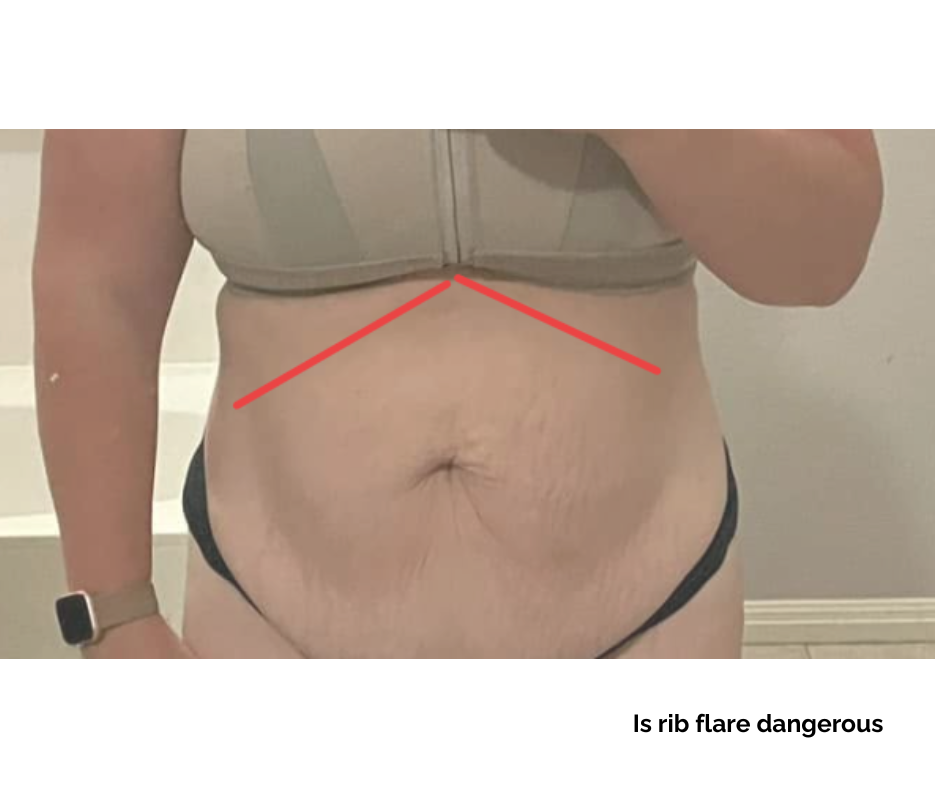
Impact on the Pelvic Floor
Your Pelvic floor and diaphragm should move together. When you inhale, your diaphragm moves down, and your pelvic floor should lengthen. When you exhale, the pelvic floor naturally lifts.
But when your rib cage flares, this coordination breaks down. The pelvic floor need to respond to pressure changes, but instead, pressure gets pushed onto your Pelvic floor, contributing to Pelvic floor dysfunction or prolapse.
You may notice Pelvic floor dysfunction in the form of leaking, heaviness, or tightness — all signs that your breathing and alignment need a reset.
Fixing Rib Flare: Where to Begin
Fixing a rib flare starts with awareness. Instead of forcing the ribs down or “sucking in your tummy,” focus on retraining your breathing and alignment.
Try this:
- Lie on your back with knees bent.
- Place your hands around your rib cage.
- Inhale through your nose, feeling your ribs expand sideways and into the mat.
- Exhale slowly through pursed lips, feeling your ribs glide inward and down.
This helps re-establish movement through the ribs and activates the deep core. Adding gentle resistance with the Omhale Breathing Trainer Pro can enhance this — it challenges your exhale, strengthens your diaphragm, and teaches your ribs to move in coordination with your pelvic floor.
Rib Flare Exercises
When it comes to rib flare exercises, think of them as retraining your whole breathing and core system rather than just “core workouts.”
Here are a few starting points:
- 90/90 breathing: Lie on your back with legs bent at 90 degrees, feet on the wall. Focus on breathing into your sides and back ribs.
- Wall reach: Standing, reach your arms forward and slightly down while keeping your ribs soft. Exhale gently to feel your ribs back and stacked over your pelvis.
- Pelvic tilts with breath: Combine breathing with gentle pelvic tilt movements to restore the natural connection between your pelvis, ribs, and spine.
These gentle drills build awareness and control — the foundation of real core strength and healing.
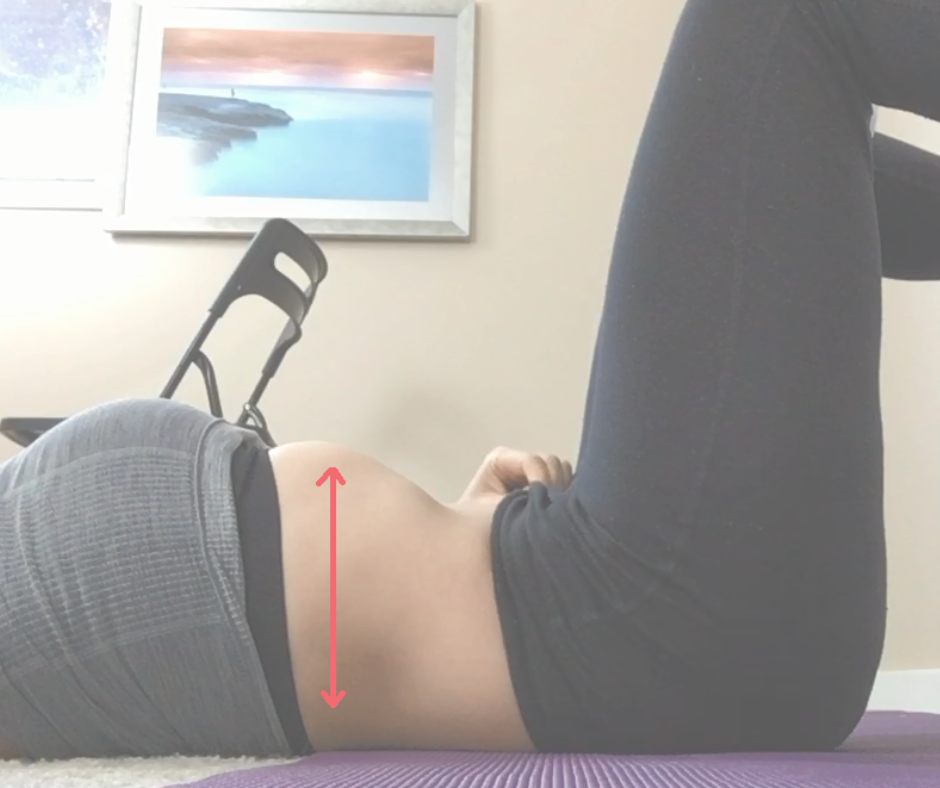
Improving Rib Flare Through Posture
Your daily posture has a huge impact on rib flare. If you tend to stand with your chest lifted or ribs pushed forward, you’re reinforcing the same pattern.
To improve alignment, think of:
- Softening your ribs (not collapsing, just relaxing them down).
- Keeping your pelvis neutral — not tucked or overly tilted.
- Breathing deeply into your sides and back instead of your upper chest.
Over time, this restores the natural rib cage resting position and allows your core and Pelvic floor to work together efficiently.
The Connection Between Rib Flare and the Pelvic Floor
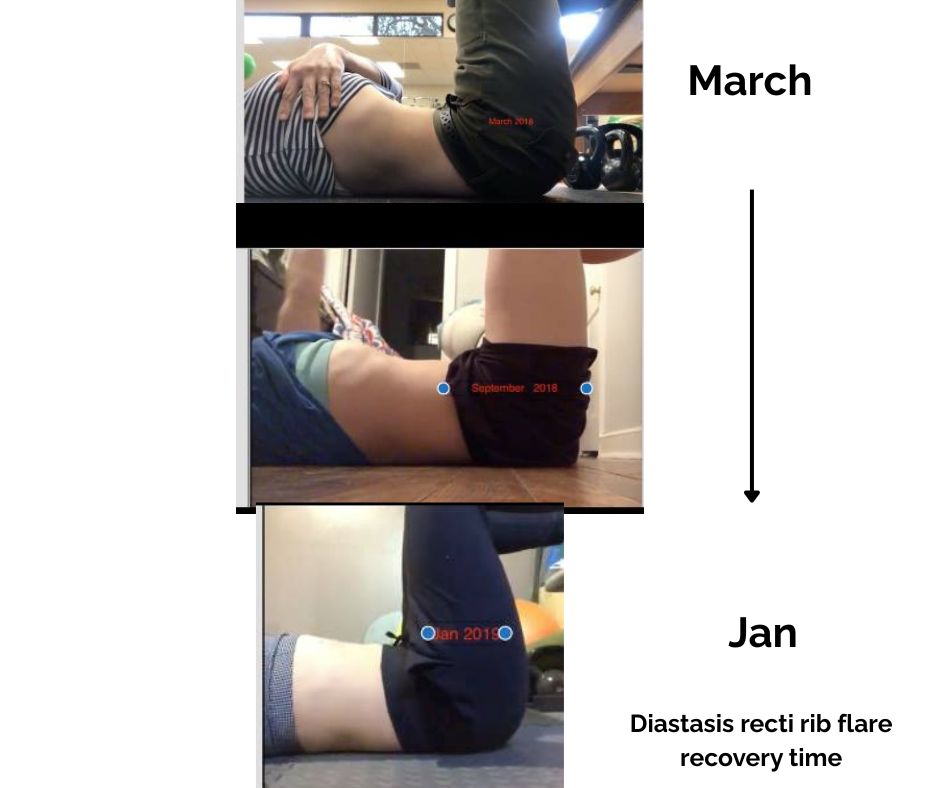
Your ribs, diaphragm, and pelvic floor form one continuous pressure system. When one part (like the rib cage) is out of position, the rest has to compensate.
That’s why rib flare and Pelvic floor symptoms so often appear together. Addressing rib flare can dramatically reduce leaking, heaviness, and tension by allowing your Pelvic floor to move naturally again.
If you’ve ever wondered why you can’t “feel your core” properly or why your tummy bulges during certain movements, it’s often because your rib cage expands upward and your core muscles can’t engage effectively.
Restoring this alignment through breathing, posture, and targeted training is key to long-term healing.
What is the treatment for Diastasis recti rib flare?
What are the symptoms of Diastasis recti rib flare?
How long does it take to recover from Diastasis recti rib flare?
What exercises help with Diastasis recti rib flare?
Is rib flare dangerous?
Rib flare isn’t dangerous, but it can lead to ongoing core and Pelvic floor dysfunction if left unaddressed. Over time, it may contribute to back pain, poor posture, and difficulty rebuilding core strength. The good news is that with proper breathing and alignment work, it’s completely reversible.
How do you fix rib flare?
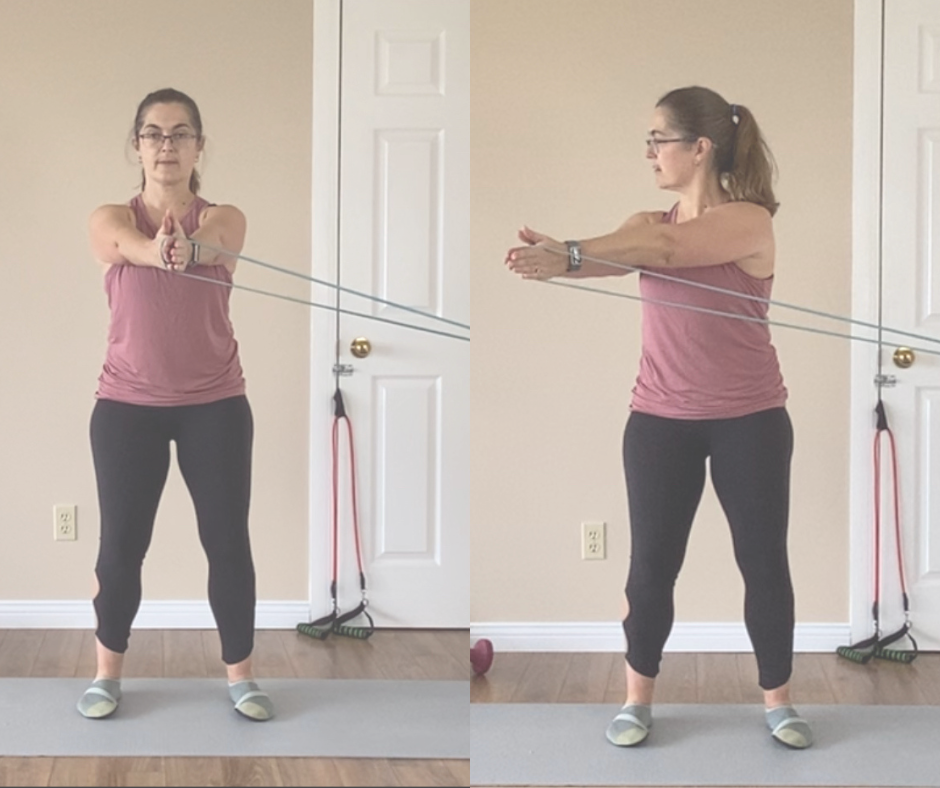
If your ribs flare, you’re not broken, lazy, or doing anything wrong. Your body simply adapted to pregnancy and hasn’t yet relearned its optimal rhythm.
By understanding what causes rib flare, how it’s associated with Diastasis recti, and how it’s affecting your Pelvic floor, you can begin to make real, lasting changes.
Start with your breathing. Align your rib cage over your pelvis. Be patient with your body — it’s incredibly resilient and capable of healing.
With consistency, the right guidance, and an approach that respects both your core and Pelvic floor, you’ll not only improve your rib flare but feel stronger, more connected, and more confident in your body again.
For moms ready to take action, choosing the right starting point matters.
UNBREAKABLE focuses on reconnecting your breath, alignment, and deep-core activation — ideal for a forward flared rib cage and early postpartum recovery.
Once your deep core is functional and strong, Upper Belly Blaster helps refine a wide-angled rib cage and improve tone through more advanced movement.
The Omhale Breathing Trainer* supports both phases by increasing resistance on the exhale, helping retrain your diaphragm, strengthen your deep core, and improve rib control.
These programs are designed to help you progress safely.
* If you decide to try the Omhale Breathing Trainer, you can use my code Katrina Oakley10 to get 10% off. This is an affiliate link, which means I earn a small commission—at no extra cost to you—when you purchase through my link. Thank you for supporting my work!
The post Diastasis recti Rib Flare appeared first on Core Fitness for Moms.


Comments
Post a Comment